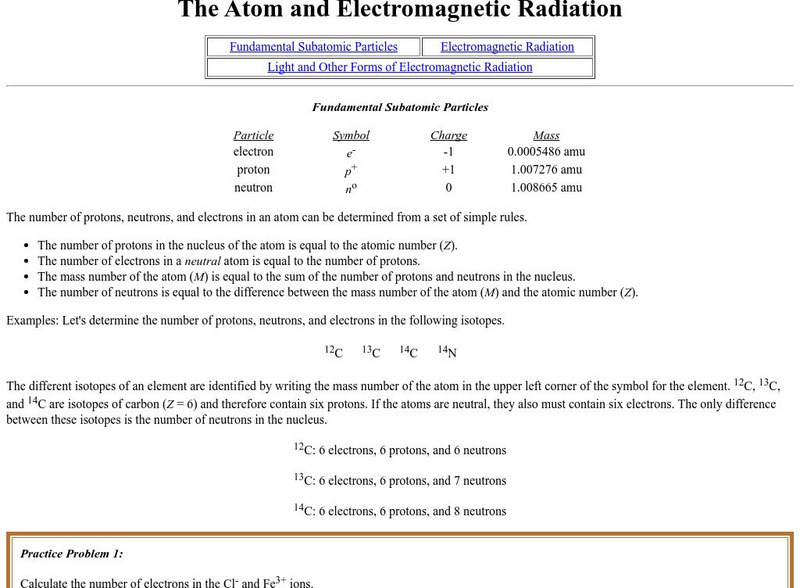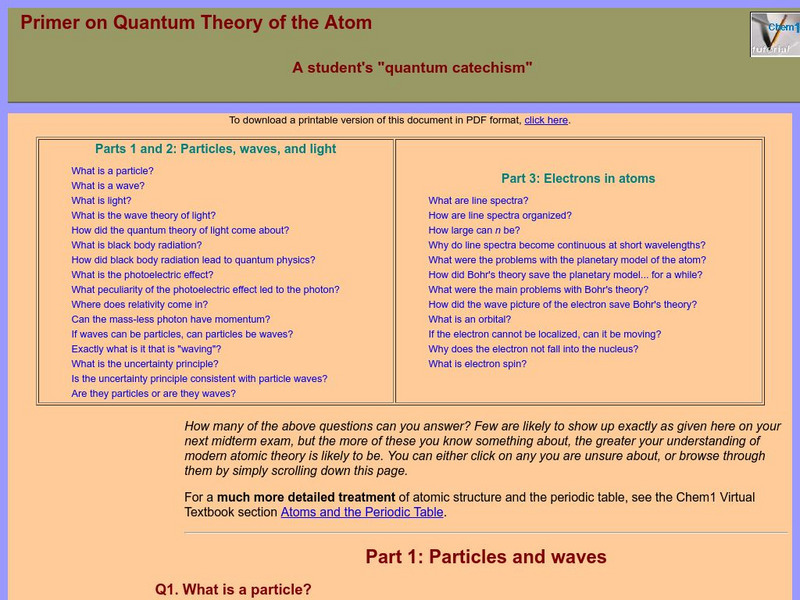Purdue University
Purdue University: Fundamental Subatomic Particles
At this site from the Purdue University, the elementary subatomic particles are described and electromagnetic radiation is detailed. Includes learning exercises and answers.
Physics Aviary
Physics Aviary: Energy Level Lab
This lab is designed to allow students to look at the connection between the gap between two energy levels and the frequency of the light that is given off when an electron traverses this gap.
CK-12 Foundation
Ck 12: Physical Science: Electrons
[Free Registration/Login may be required to access all resource tools.] Explores electrons and their place in atoms.
University of Colorado
University of Colorado: Physics 2000: Elements as Atoms: Spin
A basic explanation of spin and how it relates to electrons and quantum numbers.
Simon Fraser University
Chem1 Virtual Textbook: What Is an Orbital?
Acting as part of an overview on quantum theory, this section of the site deals with electrons and orbitals. In addition to explain what an orbital is, the site explains the movement of the electron in relation to the nucleus.
Sophia Learning
Sophia: Writing Electron Configurations: Lesson 3
This lesson will demonstrate how to write the electron configurations for any element given its location on the periodic table. It is 3 of 3 in the series titled "Writing Electron Configurations."
ClassFlow
Class Flow: Atomic Model and Orbital Quiz
[Free Registration/Login Required] This flipchart contains a 20 point multiple choice quiz on atomic history and modeling.
Georgia State University
Georgia State University: Hyper Physics: Global Positioning Satellites
The physics associated with global positioning satellites is discussed. The mechanism by which they triangulate the location of an object is described.
Georgia State University
Georgia State University: Hyper Physics: Circular Orbit
The necessity of gravitation to a circular orbit is discussed and equations for the orbital speed are derived from the law of universal gravitation. Binary systems in which two objects orbit about a center of mass are explained and...







